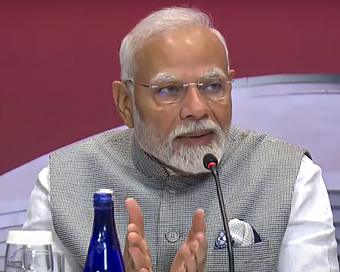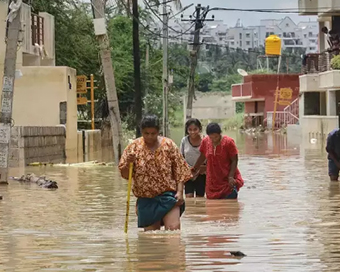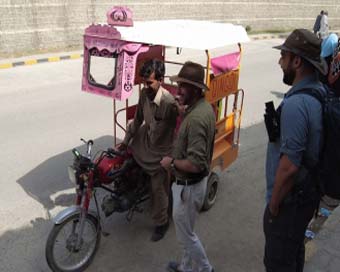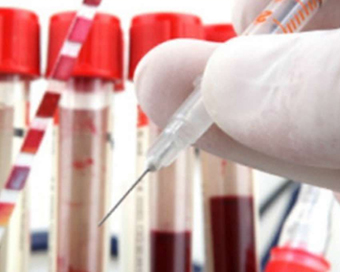Gallery
 PM Modi visit USA
PM Modi visit USA Only the mirror in my washroom and phone gallery see the crazy me : Sara Khan
Only the mirror in my washroom and phone gallery see the crazy me : Sara Khan Karnataka rain fury: Photos of flooded streets, uprooted trees
Karnataka rain fury: Photos of flooded streets, uprooted trees Cannes 2022: Deepika Padukone stuns at the French Riviera in Sabyasachi outfit
Cannes 2022: Deepika Padukone stuns at the French Riviera in Sabyasachi outfit Ranbir Kapoor And Alia Bhatt's Wedding Pics - Sealed With A Kiss
Ranbir Kapoor And Alia Bhatt's Wedding Pics - Sealed With A Kiss Oscars 2022: Every Academy Award Winner
Oscars 2022: Every Academy Award Winner Shane Warne (1969-2022): Australian cricket legend's life in pictures
Shane Warne (1969-2022): Australian cricket legend's life in pictures Photos: What Russia's invasion of Ukraine looks like on the ground
Photos: What Russia's invasion of Ukraine looks like on the ground Lata Mangeshkar (1929-2022): A pictorial tribute to the 'Nightingale of India'
Lata Mangeshkar (1929-2022): A pictorial tribute to the 'Nightingale of India' PM Modi unveils 216-feet tall Statue of Equality in Hyderabad (PHOTOS)
PM Modi unveils 216-feet tall Statue of Equality in Hyderabad (PHOTOS)Hockey India has announced a 54-member core probable squad for the upcoming senior men’s
- Satwik-Chirag return as BAI names 14-strong squad for BWF Sudirman Cup Finals 2025
- Men’s Sr Hockey Nationals to be played in division-based format from April 4
- Mensik denies Djokovic 100th title in Miami final
- KIPG: Son of a vegetable vendor, Bihar’s Jhandu Kumar eyes Worlds, 2028 Paralympics
- Hardik Singh credits hard work and team unity for receiving HI Midfielder of the Year award
Sex ratio improved to 1,020 females per 1,000 males: Economic Survey Last Updated : 01 Feb 2022 09:40:04 AM IST 
The number of females per 1,000 males in the country has risen from 991 in 2015-16 to 1,020 in 2019-21, as per the Economic Survey tabled in the Parliament on Monday.
The sex ratio at birth, i.e., female children per 1,000 male children born in the last five years, has also grown from 919 in 2015-16 to 929 in 2019-21, the Survey noted.To prevent gender biased sex selective elimination and survival and protection of the girl child, the government has made specific interventions through the 'Beti Bachao, Beti Padhao' (BBBP) scheme.Sex ratio at birth for children born in the last five years has improved in 2019-21 from 2015-16 in all states except for Himachal Pradesh, Bihar, Jharkhand, Chhattisgarh, Odisha, Maharashtra, Tamil Nadu, Kerala, Meghalaya, Goa and Nagaland, the Survey said.The total fertility rate (TFR), which is an average number of children per women, has also come down to 2 in 2019-21 from 2.2 in 2015-16, as per the Survey.The total fertility rate has even come down below the replacement level of fertility (2.1 children per woman) in the country, the Survey said.In all the states and UTs except for Manipur, Meghalaya, Bihar, Jharkhand and Uttar Pradesh, the replacement level of fertility has been achieved.Increasing the use of contraceptives, especially the modern methods, better family planning, and girl education have possibly contributed to the decline in the fertility rate, the Survey noted.It also outlined that the family planning method has increased from 53.5 per cent in 2015-16 to 66.7 per cent in 2019-21. Significant improvement has also been observed in the infrastructure and services reaching to the public, such as institutional delivery, among others.As per the report, institutional delivery has increased to 88.6 per cent in 2019-21 compared to 78.9 per cent in 2015-16.IANS New Delhi For Latest Updates Please-
Join us on
Follow us on








172.31.16.186







